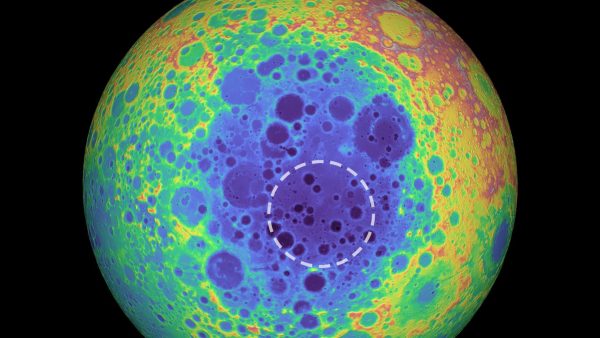
Billions of years ago, something slammed into the dark side of the moon and carved out a very, very large hole. Stretching 1,550 miles (2,500 kilometers) wide and 8 miles (13 km) deep, the South Pole-Aitken basin, as the tremendous hole is known to Earthlings, is the oldest and deepest crater on the moon, and one of the largest craters in the entire solar system.
For decades, researchers have suspected that the gargantuan basin was created by a head-on collision with a very large, very fast meteor. Such an impact would have ripped the moon’s crust apart and scattered chunks of lunar mantle across the crater’s surface, providing a rare glimpse at what the moon is really made of. (Spoiler: It’s not cheese.) That theory gained some credence earlier this year, when China’s Yutu-2 rover, which settled into the bottom of the crater aboard the Chang’e 4 lander in January, discovered traces of minerals that seemed to originate from the moon’s mantle.
Now, however, a study published Aug. 19 in the journal Geophysical Research Letters throws those results — and the crater’s origin story — into question. After analyzing the minerals in six plots of soil at the bottom of the South Pole-Aitken basin, a team of researchers argues that the crater’s composition is all crust and no mantle, suggesting that whatever impact opened the crater billions of years ago did not hit hard enough to spray the moon’s innards onto the surface.
This article was originally posted on Queer SF










